Water Rhythm Jiangsu. Slow tour of Suzhou: Visit Suzhou gardens, visit various museums in Suzhou, visit Suzhou ancient streets and temples... Feel the beautiful life of Soviet-style
"There is heaven above, and Suzhou and Hangzhou below."
It's not easy to descend to the world, so I have to go and visit Suzhou!
Walk along Pingjiang Road and blow the evening breeze of Shantang Street. Go eat crab yellow soup dumplings, eat stewed chicken feet, go visit Suzhou gardens, check in major Suzhou museums, listen to Suzhou Pingtan, and watch a Kunqu opera performance... Feel the beautiful and slow life in Gusu.
A three-day tour in Suzhou, a "paradise on earth",
I visited many famous historical and cultural streets in Suzhou: Pingjiang Road, Qilishantang;
I visited many Suzhou gardens: Lion Grove, Yiyuan, Yipu, Huanxiu Villa, Yuyuan;
I visited many museums in Suzhou: Suzhou Museum, Silk Museum, Pingtan Museum, Kunqu Opera Museum;
I also went to Xiyuan Temple to pray, and went to Shuangta Market to check in for Internet celebrity snacks...
When I came to Suzhou for a trip, I felt that time suddenly slowed down.
The May Day holiday is approaching,
Might as well bring my Suzhou travel guide,
Come on a Soviet-style slow life journey!

3-minute video "Roaming in Suzhou"
Come with me to experience the beautiful slow life in Suzhou
I. Visit Suzhou's famous historical and cultural streets: Pingjiang Road + Qilishantang
Where should I start about my trip to Suzhou?
During the three days in Suzhou, my friends and I visited many old streets, mainly Pingjiang Road and Qilishantang. There are many people, many specialties, and along the canal, there are many small bridges, flowing water, and stone bridges. You want to ask me which is more fun, Pingjiang Road or Qilishantang? Multiple-choice questions are for children, we... Let's both go for a stroll!

1.1 Pingjiang Historical District
The "Soviet-style slow life" in my impression,
It was probably the breezy and warm afternoon in my memory: after having a feast on crab roe soup dumplings, shrimp wonton and braised chicken feet at a well-known snack restaurant on Pingjiang Road, I immediately checked in to an online celebrity stewed food shop. Then he sat leisurely on the stone pier by the river on Pingjiang Road with his friends, listening to the boat lady singing,"What a beautiful jasmine flower, fragrant and beautiful all over the branches, fragrant and white, and everyone praises... "I was holding the stewed duck claw and duck fin I just bought at the Internet celebrity stewed meat shop in my hand, and hummed," What a delicious stewed duck claw. The skin and meat are so strong, and everyone praises it for being fragrant and spicy...“

The small bridge, flowing water and stone bridge are one of the highlights of Pingjiang Road.
The main road is full of tourists. You might as well take a rowing boat and tour the canal, listen to the boatwoman singing a song, and leisurely shuttle through the river...
Pingjiang Road is the most complete and largest historical district in Suzhou to date, and can be called the epitome of the ancient city of Suzhou.
The current Pingjiang Historical District still basically maintains the double chessboard pattern of "water and land parallel, river and street adjacent" and the unique style of "small bridges and flowing water, pink walls and black tiles", and has accumulated extremely rich historical relics and cultural landscapes. In addition to walking through the streets, when you arrive in Pingjiang Historical District, you can also visit the Pingtan Museum, Kunqu Opera Museum, and the World Cultural Heritage "Yuyuan"(I will write in detail in the third Museums section of this travel note)

There are also many Internet celebrity restaurants in Pingjiang Historical District, all of which have become must-check in and take photos for tourists.

Passing by a Suzhou restaurant, even the decoration inside the store is ancient style

I passed by an Internet celebrity restaurant. The decoration inside the store, especially the bamboo lanterns on the roof, was a highlight.

After the lights are first turned on, the night view here is simply unique
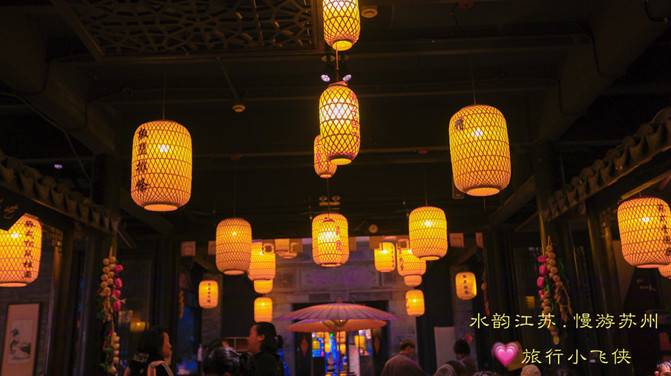
Listen to Suzhou Pingtan and eat Suzhou food, and savor the beautiful life of Soviet-style!

Pingjiang Historical District, you can stroll from day to night.
There are many tourists during the day. After the peak night period, wait for the streets to calm down and enjoy the night view. It is really more beautiful as the night goes on!

1.2 Qilishantang
Shantang Street runs east to Changmen and west to Huqiu. It has a total length of about 3600 meters, or about 7 miles, so it is called "Qilishantang to Huqiu".
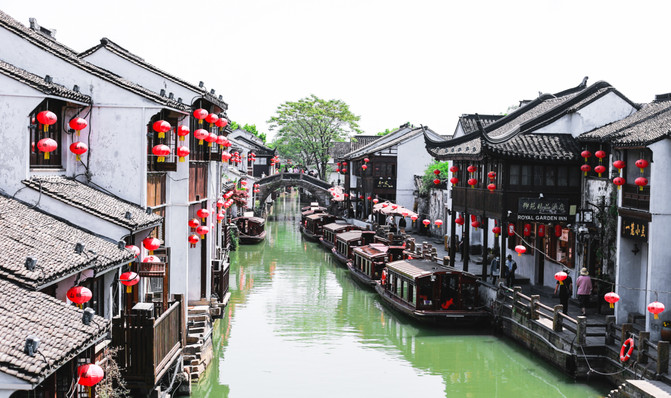
In the Tang Dynasty, Bai Juyi was appointed governor of Suzhou. He dredged the northwest river outside Suzhou and excavated it into Shantang River. The ancient street built next to the river was called Shantang Street, and there were ancient buildings along the street. Most of the ancient buildings are from the late Qing Dynasty and the Republic of China. They are architectural groups composed of several drops and several advances, vertically falling and horizontally moving.

When you come to Shantang Street, it is also best to take a cruise ship.
Take an ancient cruise ship at the dock and admire the beauty of ancient buildings on both sides of Shantang Street. From time to time, I hear Suzhou Pingtan from the teahouse.

Qilishantang, there are many commercial shops, including cheongsam shops, Hanfu shops, silk shops, fan shops, noodle shops, Internet celebrity snack shops... After walking around, you can always find something you like.

When you arrive in Suzhou, Shantang Street is worth checking in!

II. Suzhou Gardens
When traveling to Suzhou, how can you not visit Suzhou gardens?
Suzhou is known as the "Garden City". Private gardens in Suzhou were built in the 6th century before. During the late Qing Dynasty, there were more than 170 gardens inside and outside the city, and more than 50 are now present. Suzhou's classical gardens, represented by Humble Administrator's Garden and Lingering Garden, are known as "recreating the universe within a stone's throw" and are the leader and pride of Chinese garden culture.
In 1997, the Humble Administrator's Garden, Lingering Garden, Wangshi Garden and Huanxiu Villa among Suzhou's classical gardens were included in the World Cultural Heritage List; in 2000, Canglang Pavilion, Lion Grove, Yiyuan and Tuisi Garden were included as Suzhou's classical gardens. Expansion projects are also listed as world cultural heritage.
Suzhou's classical gardens include Humble Administrator's Garden, Lingering Garden, Master of Nets Garden, Huanxiu Villa, Canglang Pavilion, Lion Grove, Yi Garden and Tuisi Garden. It is impossible for me to visit all the Suzhou gardens during a short three-day tour of Suzhou. I have been to the Humble Administrator's Garden and the Lingering Garden a long time ago, so this time I will visit the Lion Grove, Huanxiu Villa, Qiyuan, and Art Garden...
2.1 Suzhou Garden-Lion Forest
Emperor Qianlong visited the Lion Grove six times. It seems that the Lion Grove is very charming!
In this season when wisteria blossoms bloom, my Suzhou garden journey began with the Lion Grove...

Lion Forest is located in the northeast of Suzhou City. Because the park is lined with stone peaks that look like lions, it is named "Lion Grove". Lion Forest was built in the second year of Zhizheng of the Yuan Dynasty (1342) and is one of the representatives of Chinese classical private garden buildings. It belongs to one of the four famous gardens in Suzhou. Lion Forest is also a world cultural heritage site, a national key cultural relic protection unit, and a national AAAA tourist attraction.

Lion Forest is famous for its rockery. Lion Forest rockery is the only surviving large-scale rockery in Chinese gardens and has important historical and artistic value. The rockery peaks in the Lion Forest are undulating, with strange peaks and strange rocks. There are nine routes and 21 entrances in the rockery group. The horizontal direction is extremely tortuous, and the vertical direction is strikingly undulating.

Yan Yu's reputation comes from the "Book of Songs·Xiaoya·Che Yi","Yan Yan is famous, good but no shooting", which means Yan Yan is entertaining and always endless. Yanyu Hall is the main hall of the whole garden and was originally used by the garden owner to entertain guests. This hall is the more famous Mandarin Duck Hall in Suzhou gardens. There are three immortals and one child on Liang Station, which means that the stars shine brightly.

Stained glass is inlaid in many places in the doors and windows of Lion Grove, which is a highlight.
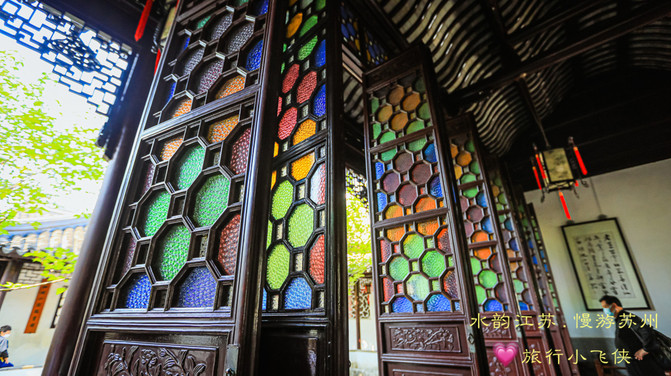
Although the Lion Forest is not high, its caves and ravines spiral and are wonderfully embedded in the void; although the pool is not deep, its circles are tortuous and the layers are profound, and the waterfalls and springs are hidden in the flowers and trees. Most of the ancient buildings in Lion Forest retain the Yuan Dynasty style and are representative works of Yuan Dynasty gardens. The garden wins with stacked stones, winding caves and ravines, strange stone forests stand, and pools linger.

Lion Forest rockery is one of the most tortuous and complex examples of mountain piles in Chinese classical gardens.
The rockery group is stacked with "transparent, leaking, thin and wrinkled" Taihu Lake stones. There are stone peaks and stalagmites on the rockery, and ancient trees and cypresses grow between the rocks. On the stalagmite hangs kudzu hanging.
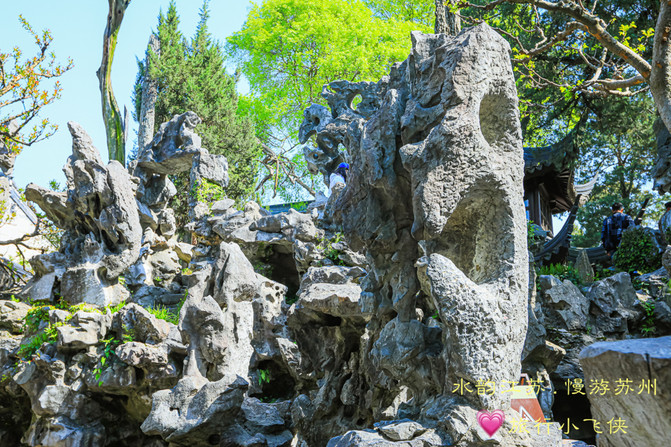
The rockery in Lion Forest simulates the human body, lion shapes, animal statues, etc. related to Buddhist stories to illustrate Buddhist principles in it, in order to achieve the purpose of exaggerating the Buddhist atmosphere. Its cave design is not entirely based on natural caves, but adopts a maze-style design. All the mountains in the eastern part of the park are built with lake stones, and the Buddhist Sutra Leo is used as a mimicry shape to abstract and exaggerate. The mountain is divided into three layers, upper, middle and lower, with twenty-one caves and nine winding paths. There are "Hanhui","Tudan","Yuli","Angxiao" and "Lion" peaks on the top of the mountain, each with a strange demeanor. The branches of ancient cypress and ancient pine trees on the mountain are vigorous.

Lion Forest has a clear theme, rich depth of field, and distinct personality. The rockery, cave and valley are unique, and each grass and tree has a unique charm.
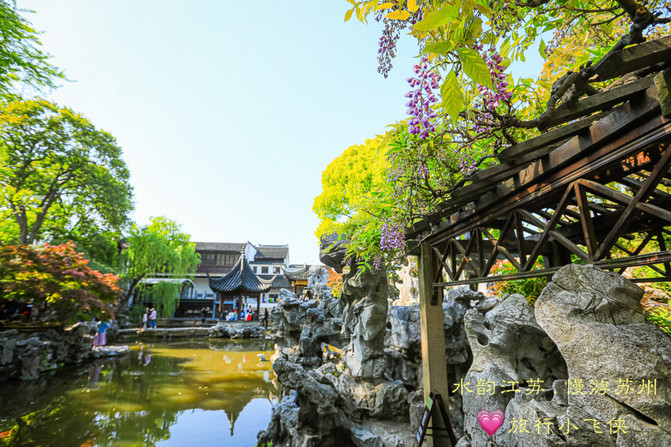
There are many rockery, flowers and trees in the Lion Forest, many pavilions and pavilions, and many windows in corridors. Windows are either carefully carved hollow patterns or geometric patterns. Suzhou gardens pay attention to the beauty of pictures in every corner, and looking at the scenery through the window is like a painting.

Recommended tourist order for Lion Forest:
Yanyutang--Xiaofang Hall--Yifeng Zhibai Xuan--Ancient Five Pine Garden--Hushan Pavilion--Hualan Hall--Zhenqu Pavilion--Shifang--Dark Fragrance Shuying Building--Flying Waterfall Pavilion--Wenmei Pavilion--Shuangxiangxian Pavilion--Fan Pavilion--Wen Tianxiang Stele Pavilion--Imperial Stele Pavilion--Xiuzhu Pavilion--Lixuetang---Exit
You can also buy lion-shaped or landscaped Internet celebrity ice cream at the exit of Lion Forest. Remember to sign a card and leave a memory ~

2.2 Suzhou Garden-Yipu
Yipu, located at No. 5 Yapu Lane, Tianku, Changmen, Suzhou City, was built in the Ming Dynasty. It was once named "Zuiying Hall","Yaopu" and "Jingting Mountain House", and was renamed "Yipu" in the early Qing Dynasty. The park has pleasant scenery and simple style, which well preserves the pattern of the early days of its establishment and has high historical and artistic value.

Rose met Yipu in April, which happened to be the season when roses were in full bloom in Yipu Garden.

In April, the wisteria flowers in the art garden are also blooming very enthusiastically
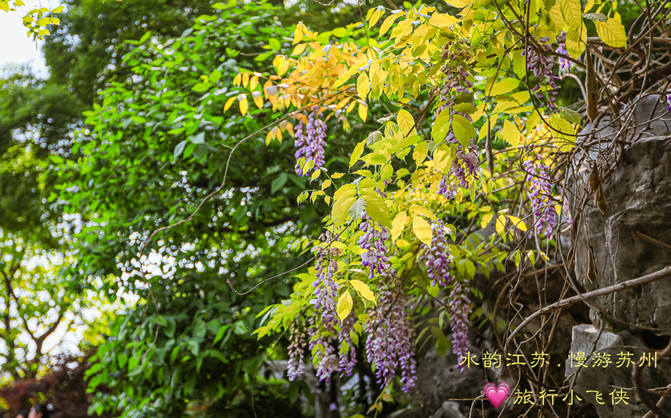
Friends traveling together took photos under the rockery, stone forest and wisteria flowers

Suzhou gardens attach great importance to the beauty of pictures in all corners.
Several maple trees and green shrubs are planted next to the round arch, and the colors are layered and layered.
There are creeper or rose flowers spreading on the walls. Walking in the garden, you can enjoy beauty even from a very small area.

For a photography enthusiast like me, every corner here is a great spot for shooting and framing. Especially with such a round arch, when the beautiful lady stands up, it is as beautiful as the painting on the embroidered cattail fan in Suzhou.

Doors and windows in Suzhou gardens, pattern design and carving are the top grades of arts and crafts. Generally speaking, those doors and windows should be as detailed as possible and never vulgar, even if they are simple and ingenious. Even if such a square rectangle is simple and has no hollow out and carefully carved doors and windows, and a clump of bamboo forest is planted beside the window, the overall picture looks particularly elegant and enhances the overall pattern beauty. Coupled with a few poems as embellishments, it will be even more artistic.

The total area of the art garden is about 3800 square meters, and the whole garden is centered on about one-fifth of the pool water. There are water inlets protruding out from the southeast and southwest corners of the pool water, and a stone bridge of different shapes is built above the water inlets. To the north of the pool water, there is a hall building mainly composed of Boya Hall. There is a small courtyard built at the south end of the courtyard with a lake stone flower platform. Five water pavilions are built at the south side of the courtyard adjacent to the pool. The wing rooms on both sides are connected to the wing rooms on the east and west sides of the pool water. To the south of the pool water, there is a rockery made of mounds, and lake rocks are stacked to form cliffs and dangerous paths, which is the main opposite view in the garden. To the east of the pool water is the "Milk Fish Pavilion" built in the Ming Dynasty, and there are paths outside that connect with various places. The small courtyard of "Qinlu" to the west of the pool water is separated and connected to other scenic spots through the round door.

Walking into the courtyard door, you can see a small pool in the courtyard, which seems to be connected to the large pool. This is the only place in Suzhou gardens.

This technique of combining pool water, stone paths and cliffs in the art garden takes nature and strives to transcend nature. It was the most commonly used layout technique by the Suzhou generation of gardeners during the Ming and Qing Dynasties.

In 2000, Canglang Pavilion, Lion Forest, Yiyuan, Yipu and Tuisi Garden were also listed as World Cultural Heritage Sites as extensions of Suzhou's classical gardens. You can see the stone tablet of the "World Cultural Heritage" at the entrance.

At this time, the maple forest is gradually dyed, and the colorful maple leaves are also a highlight.
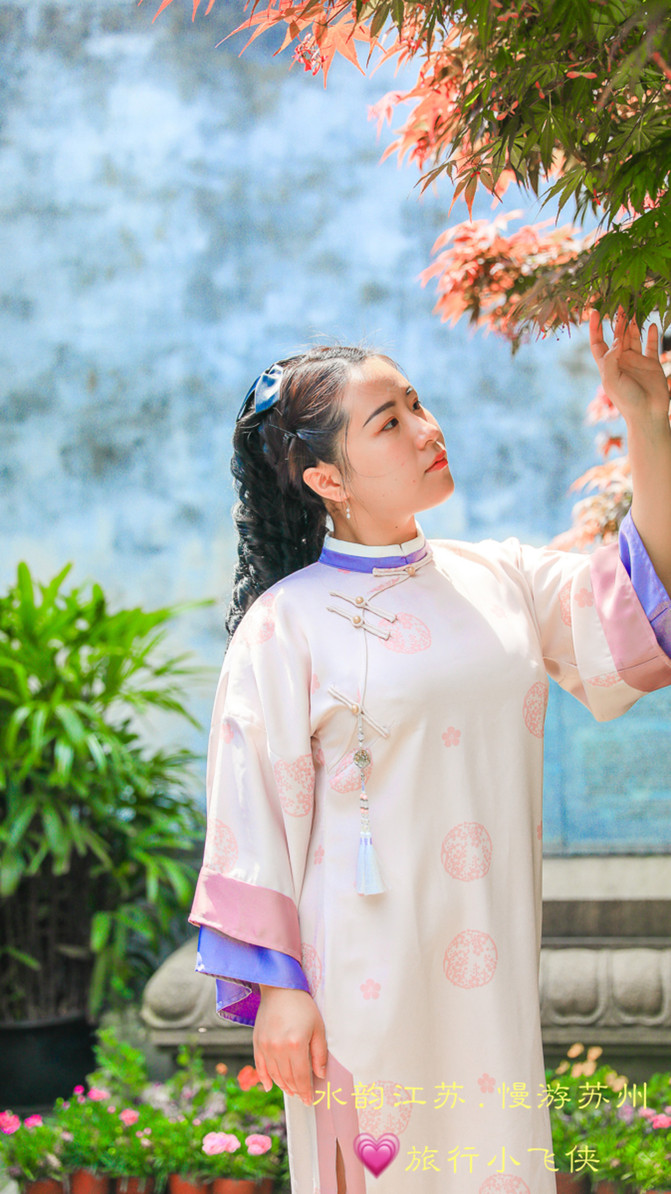
2.3 Suzhou Garden- -Huanxiu Villa
Huanxiushan Village is located at No. 262 Jingde Road, Suzhou City. It was originally the former site of Qian's Golden Valley Garden in the Five Dynasties. It changed hands several times and was expanded many times. Qingdao Guangguang began to be called Huanxiushan Village, also known as Yiyuan. Huanxiushan Village is not large in area, covering an area of only about one acre, and there is no exterior to borrow. The gardeners moved the sky and shrank the earth, and piled up rocks and built mountains, creating this famous garden.

In 1997, among the classical gardens of Suzhou, Humble Administrator's Garden, Lingering Garden, Master of Nets Garden and Huanxiushan Village were included in the World Cultural Heritage List. There is also a "World Heritage" stone tablet in Huanxiushan Village.

The scenery of Huanxiushan Manor is mainly mountains, supplemented by pool water, and there are not many buildings. The garden is small and imposing.

During the Qianlong period of the Qing Dynasty, the rockery built by Ge Yuliang, a famous stone stacker,
Covering an area of less than half an acre,
The main peak stands out abruptly in the southeast, and the secondary peak bows in the northwest.
The pool water is surrounded by green trees.

The mountains have dangerous paths, caves, secluded valleys, stone cliffs, flying beams, and cliffs. The realm is changeable, just like nature. The main peak is 7.2 meters high, the valley is 12 meters long, and the mountain path is more than 60 meters long, circling up and down.

Ge's stacked mountains use the "big axe splitting method", which is concise and vigorous, has a rigorous structure, is well-organized, and is as smooth as heaven. It is known as "unique in the south of the Yangtze River".

Red maples, pine trees, cypresses, crape myrtle, magnolias are planted around the hall of Huanxiushan Village...
The planting and pruning of trees in Suzhou gardens also focus on painting. Tall trees and low trees pitch. Deciduous trees alternate with evergreen trees, and many flowers alternate with different seasons, so you don't feel lonely all year round.

A wide variety of flowers and trees add some vitality and artistic conception to the overall building complex of Chizi Rockeries. For me who loves photography, such an exquisite garden landscape, whether it is to shoot scenes or young ladies, is a good place to shoot!
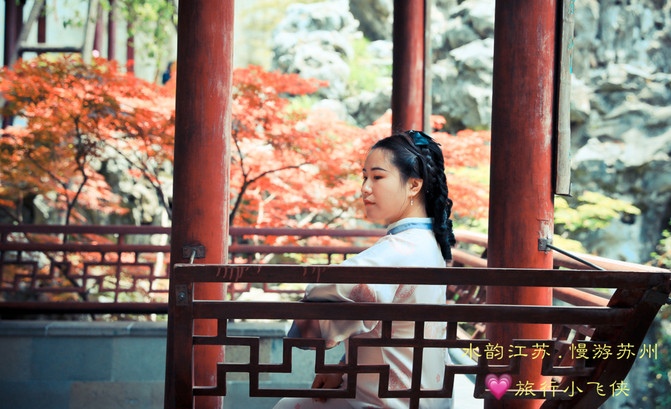
2.4 Suzhou Garden-Yiyuan
Coming out of Huanxiushan Village, it takes about ten minutes to walk and turn a few intersections to reach Yiyuan.
The streets and alleys along the way are quite prosperous. Arriving at Yiyuan, which is "hidden in the city", is like traveling to a paradise outside the world.
Yiyuan, a classical garden in Suzhou, is named Yiyuan after the sentence "Brother Yiyi" in the Analects of Confucius.
Yiyuan was built during the Guangxu period of the Qing Dynasty. The park is divided into two parts: the east and the west. The west of the park used to be an ancestral hall, and the south of the park can be connected to residential buildings. The layout of the park is separated by a compound corridor. The east is dominated by buildings. Lake stones and flowers and trees are planted in the courtyard. The western pool is in the center, surrounded by rockery, flowers and trees, and buildings. Due to the late establishment of the park, it absorbed the strengths of various gardens: for example, the complex corridor imitates the Canglang Pavilion, the pool imitates the net teacher's garden, the rockery learns the Xiushan Village, the cave valley imitates the lion forest, and the dry boat imitates the Humble Administrator's Garden. The layout is natural, the pavilions, pavilions, corridors and boats are small and elegant, and the mountains and ponds are sparse and pleasant. It can be called a boutique in the garden.

When I first met Yiyuan, I saw a white wooden hydrangea tree with flowers, which was very dreamy!

Being in it is like entering a fairyland, which is refreshing and refreshing.
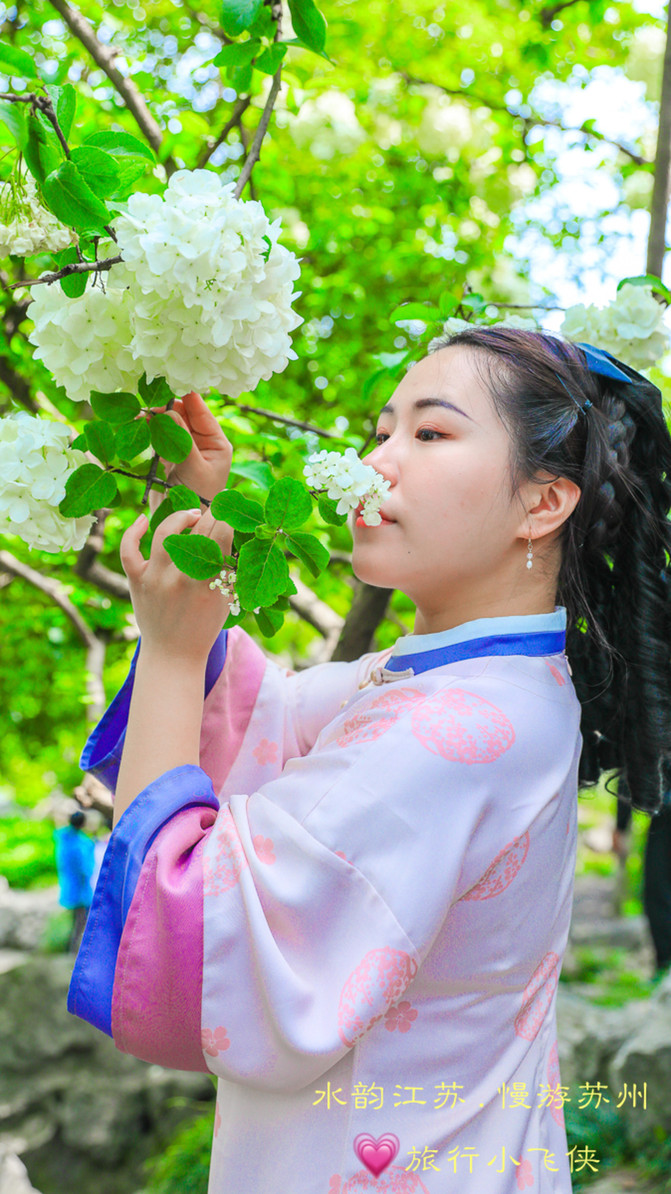
When visiting Suzhou gardens, you will inevitably notice the flower walls and corridors. There are walls separated by them and corridors. With more layers, the scenery becomes deeper. Between the corridors and walls, there are good places for tourists to take photos and check in!

Brick woodcuts and various hollow patterns can be seen everywhere on the corridor walls, and the corners are dotted with various shrubs and flowers. Walking in the garden is like visiting an art exhibition hall.

In the park, rockery winding, pavilions and pavilions are vague, clouds and pear rain are cloudy, bamboo shadows are swaying, birds are singing and fragrant flowers are fragrant, and the scenery is elegant and pleasant.

There are rockery and ponds in Suzhou gardens. The stacking of rockery can be said to be an art rather than just a technology. Either there are mountains and peaks, or a few hills matched with bamboo and flowers, which all depends on the life experience of the designers and craftsmen, and the mountains and valleys in our hearts. Only then can we tourists forget the city of Suzhou when climbing and only feel like we are in the mountains. Jungle.

2.5 Suzhou Garden- -Yuyuan
Yuyuan, formerly known as Sheyuan.
It is located at No. 7 Xiaoxin Lane, Cangjie, Suzhou City. It was built in the early Qing Dynasty and was renamed "Yuyuan" in the late Qing Dynasty. This garden is named "Yan Garden" because there is a garden built on the east and west sides of the house, and "couple" and "couple" are connected, implying the meaning of a couple returning to the fields and living in seclusion.

The garden faces the river on three sides and along the street on one side. The total area of the garden is about 8000 square meters. The layout highlights the characteristics of mountains as the main part and ponds as the auxiliary part. The main building faces south and is a group of buildings with double eaves. There are three small courtyards in the southeast corner, collectively called the "Chengqu Cottage". The West Garden is small in area, centered on the "Weaving Curtain Old House" of the study room, and divided into two small courtyards. There are lake stone rockery in the front yard, lake stone flower beds in the backyard, a library building in the north of the garden, and rockery, flowers and trees, lake stones, etc., which are full of interest.

The rockery landscape in the garden is called "Huangshi Rockery" and is built in front of the Chengqu Cottage Building. The fake Shandong half is large, and the stone path in front of the hall leads to the platform on the east side of the mountain and the stone chamber on the west side. The western half of the false mountain is smaller, descending step by step from east to west, ending at the right wall of the small hall. There is a valley road between the east and west halves, and a pool of water is adjacent to the east. There are no pavilions built on the mountain, but more than ten kinds of flowers and trees are planted on the top of the mountain and behind the mountain, adding a bit of fun to the mountains and forests.

The water in the park extends southward along with the rockery. There is a curved bridge on the water. At the southern end of the pool, there is a pavilion built across the water. It is called the "Shanshui Pavilion". The mountain is opposite to the Chengqu Cottage, forming a scenic spot with mountains as the main body.


On November 30, 2000, Suzhou's classical gardens, including Yuyuan, were approved by UNESCO to be added to the World Heritage List.

2.6 Xiyuan Temple, continue to enjoy the garden scenery of Suzhou
Xiyuan Jiechuanglu Temple is referred to as Xiyuan Temple, also known as Jiechuanglu Temple, and has a history of 700 years.

Xiyuan Temple is surrounded by the Lingering Garden, which is famous for its classical gardens in the east, the secluded Hanshan Ancient Temple in the west, the beautiful Tiger Hill Scenic Area in the north, and the Changmen Canal in the south. The geographical location is unique.

Hearing the bell, the troubles are pure, the wisdom is long, and the blessings are increased

Yellow walls and black tiles are magnificent.
The 500 Arhat halls in the temple are one of the four major Arhat halls in China
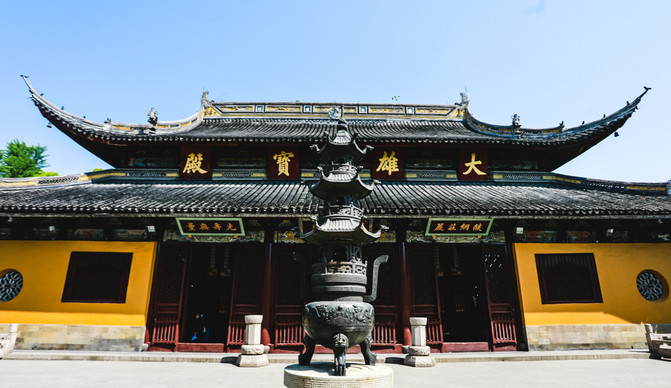
A good place to pray

Xiyuan Temple is a temple that cleverly integrates Buddhist halls and Suzhou gardens. The ancient trees in the temple are deep, the Buddhist space is heavy, the green winding water, the singing of birds and the fragrance of flowers, and the sound of Buddhist music makes people walk into a clean and solemn Holy Land of Jialan. Close to the busy city without noise, close to the world without pollution.

There is a pavilion in the center of the lake in the release pool. As the name suggests, the pavilion is built in the center of the lake and surrounds the water, like an island or Penglai. The pavilion is hexagonal, with a brick-wood structure, a pavilion form, and double cornices. It is light and colorful, and has beautiful shape. The pavilion is divided into inside and outside by powder walls, with gates on the east and west sides, and connected to both sides through a nine-curved stone bridge. There is an eaves corridor outside the pavilion, with railings set up to watch the fish fly and the divine turtle emerge from the water. It is intoxicating and unforgettable.

Bell fish banishes the disturbance of troubles; green shade pavilions relieve the hard work of life; white clouds and flowing water, walking happily, are all a kind of beautiful enjoyment in the body and heart. Here, we can not only witness the different expressions of the five hundred arhats, but also appreciate the leisurely taste of winding paths leading to the secluded scenery. We also have the opportunity to see the four-hundred-year-old divine turtle swimming in the pool. It is endless fun.
In the West Garden, the one covering the largest area is the release pool.
There are two spotted turtles in the West Garden release pond. The spotted turtle is a species of turtle. It is named the spotted turtle because of the yellow-brown spots on its back. According to textual research, these two spotted turtles are over 400 years old and are the oldest known animals in the world. Moreover, there are only three spotted turtles like this spotted turtle with spots on its back in the world. There are two in a small release pond in Xiyuan Temple, which shows how precious these two national-level protected animals are.

Xiyuan Temple is named after the garden because it has a beautiful West Garden, where you can see the beautiful scenery of a typical Jiangnan garden. There are clear water and clear waters, ancient trees and fragrant grass; birds singing and fragrant flowers, bamboo and green willows; there are also rockery, playing with stones, pavilions and pavilions.

3: Visit major museums in Suzhou
During a day tour in Suzhou,
I visited many gardens,
There are also quite many museums to visit: Suzhou Museum, Silk Museum, Pingtan Museum, Kunqu Opera Museum...
3.1 Suzhou Museum
Suzhou Museum, a fusion of art and history, has been listed as a must-see attraction in Suzhou along with Suzhou's famous gardens. It is a popular attraction on the Suzhou Tourism Network. Tickets are free and closed on Mondays. It is recommended to make an online reservation in advance.

The new building of Suzhou Museum is a highlight. This online celebrity building group was designed by I.M. Pei, a world-renowned architect. The architectural shape is naturally integrated with the environment, the space is unique, the building materials are exquisite and the interior is conceived, and the natural light is introduced into the interior to the greatest extent possible.
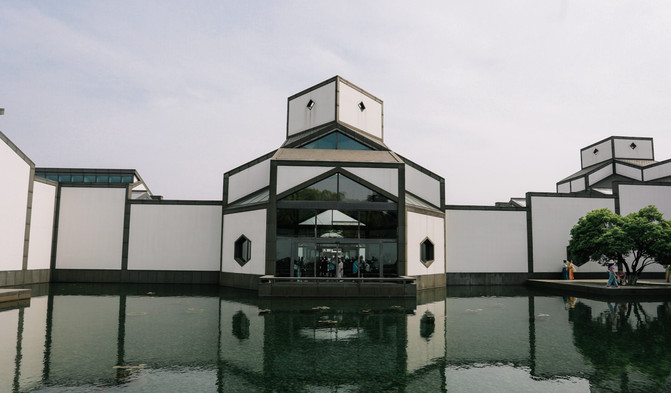
It is a comprehensive museum integrating modern museum buildings, ancient buildings and innovative mountains and water gardens.
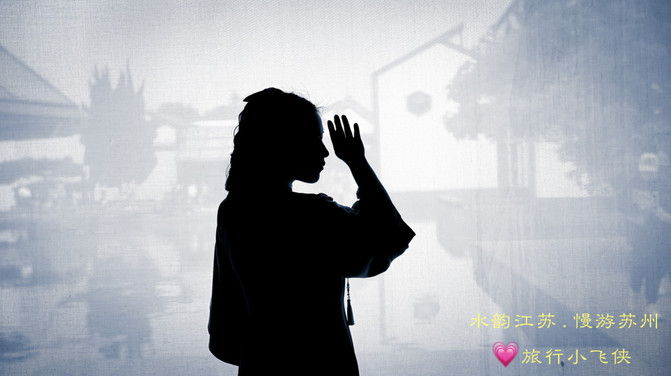
In terms of building structure, glass and steel structures allow modern people to borrow large amounts of daylight indoors. Open steel structures replace the wooden materials of traditional buildings. The design of roof shapes breaks through the lighting of the "big roof" of traditional Chinese buildings. constraints. The slope top is composed of geometric shapes. First of all, the three-dimensional geometric glass skylight above the roof has a unique design.

Drawing on the practice of tiger skylight in traditional Chinese buildings and improving it, the skylight is opened in the middle of the roof, so that the three-dimensional geometric skylight of the roof and the sloping roof underneath it form a folded angle, presenting a three-dimensional modeling effect, which not only solves the problem. The practical problems of traditional buildings in lighting have enriched and developed the roof modeling style of Chinese buildings.

The use of stone around the roof and the white wall underneath has unified the overall style of the building. As far as the roof is concerned, if traditional small blue tiles are used, they will be fragile and prone to leakage and require frequent maintenance. Their firmness, craftsmanship and flatness will hardly meet the requirements of the new building. In order to coordinate the materials and forms, dark gray granite is used to replace traditional gray tiles. This kind of granite, known as "Chinese Black", has gray in black and is black. It becomes black when it is rained. When the sun shines, the color becomes lighter. Dark gray. The stone slices are processed into diamond-shaped shapes and laid evenly on the roof in turn, giving a strong three-dimensional effect.

Coinciding with the Subote Exhibition-"The Unique Fragrance of Begonia-The Development and Inheritance of Dazu Stone Carvings"

Through more than 50 pieces (sets) of exhibits, the unique aesthetic connotation, superb carving craftsmanship and cultural preservation achievements of Dazu Stone Carvings are presented.
This exhibition was carefully planned and organized by Suzhou Museum and Dazu Stone Carving Museum. The exhibition will last until May 5th.

Highlights of the visit to Suzhou Museum: calligraphy and painting, twin towers treasures, Ming and Qing porcelain and Suzhou arts and crafts

The basic exhibition hall of Suzhou Museum has only one floor. The exhibition area of the museum has four permanent exhibition halls: "Wu Land Relics","Wu Pagoda National Treasures","Wu Zhong Elegance", and "Wu Gate Painting and Calligraphy". Among them, the "Wu Land Relics" series includes four theme exhibition rooms: Morning Light, Competition for Spring and Autumn, Beautiful Jiangnan, and Metropolis Flowing Rhythm; the "Wu Pagoda National Treasure" series includes two theme exhibition rooms: Ruiguang Temple Pagoda Buddhist relics and Huqiu Yunyan Temple Pagoda Buddhist relics; The "Wuzhong Elegance" series includes the long objects of the study, the treasures of cultivation, the skills of jade attack, the magic skills of carving, the elegant affairs of the study room, the casual transfer of leisure, the ink drama cottage (i.e. the Song Painting Studio, outdoor), and the splendid floating life exhibition hall;"Wu Gate Painting and Calligraphy" is especially composed of works of the Wu School and the descendants of the Wu School, the four kings Wu Yun and his descendants, and the descendants of the Yangzhou Painting School.

Suzhou Museum was established at the site of Zhongwang Mansion of the Taiping Rebellion. It is a well-preserved historical building of the Taiping Rebellion in China.
The Zhongwang Mansion has preserved more than 400 squares of important relics and artistic treasures from the Taiping Rebellion period, such as "Soviet-style painting". The painting of Zhongwangfu is a representative of the "Su-style painting" of the Qing Dynasty. The large number of it remains is rare in Jiangnan. It is an extremely precious cultural heritage in the treasure house of Chinese culture. The remaining buildings, paintings and murals have historical value and art. value.

To fly kites on the Qingming Festival, firstly, people believed that it could eliminate diseases and eliminate disasters, seek peace and pray for good luck; secondly, the ancients believed that rising yang energy in spring was the most suitable for flying kites. It happened that "Poetic Jiangnan, February Harrier" was exhibited in the courtyard of Zhongwang Mansion of Suzhou Museum, taking me into a world of kites.

Kite is one of the traditional Chinese handicrafts. In ancient times, it was called "paper kite","paper harrier","kite", etc. In the past, the shapes of kites mainly included eagle-like kites, harriers, swallows, etc., but later developed characters, phoenixes, and long strings of centipedes, etc., and in modern times, there are countless varieties.


3.2 Suzhou silk Museum
Travel to Suzhou
I have to buy some Suzhou specialty silk embroidery when I go back. Go home and honor my elders!
But how to choose in a silk shop so that you can appear very knowledgeable and make it convenient to select and bargain?
I happened to be chasing a costume drama recently,"The Wind Rising Nishang" starring Naza and Xu Weizhou. I have a strong interest in silk and embroidery. Then why not visit the Silk Museum in Suzhou!
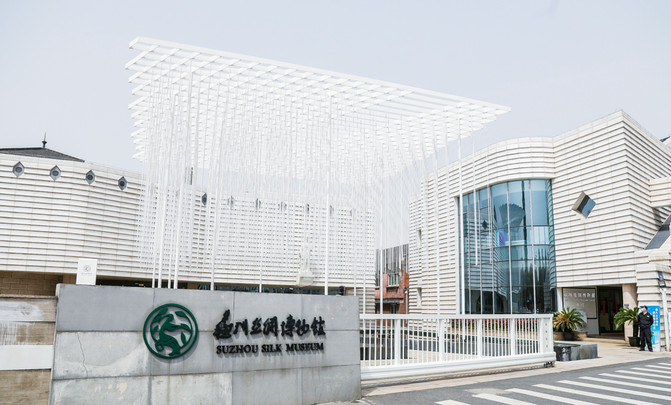
Suzhou is the birthplace of silk with a history of more than 6000 years. Suzhou Silk Museum is the earliest silk museum in China. There are 6 exhibition halls including Ancient Silk Exhibition, Modern Silk Exhibition, Children's Exhibition, Mulberry Garden, Silk Machinery Exhibition, and Master Qian Xiaoping Silk Culture and Art Museum.

As of August 2019, Suzhou Silk Museum has more than 700 cultural relics collections from the Neolithic Era to the Ming and Qing Dynasties, and more than 3000 specimens and materials of various types.

It is also an artistic enjoyment to look at the various exquisite silk weaving collections in the exhibition hall.

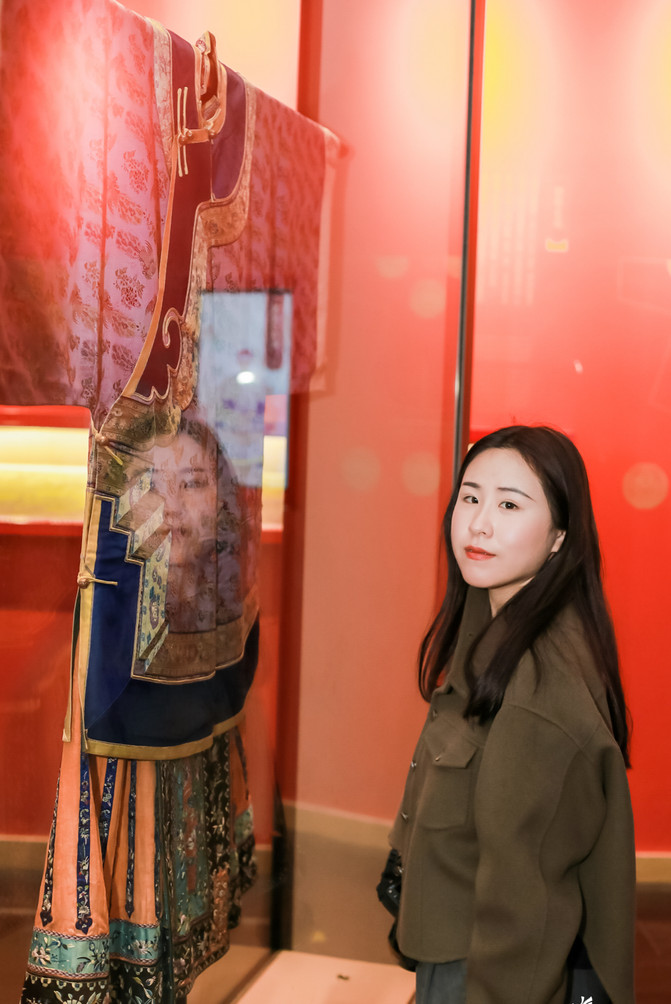
Outside the house of Sangzi Garden is a small mulberry garden, with tall stem mulberry, hanging mulberry, lake mulberry, and fruit mulberry.

The corridor leads to the sericulture farm. Scenes such as the kitchen, living room, and bedroom restore the scene of a sericulture family in Suzhou.

3.3 Suzhou Pingtan Museum
When visiting Pingjiang Road, you pass through Zhongzhangjia Lane,
There are two museums with Suzhou characteristics here: Pingtan Museum and Kunqu Opera Museum

The Pingtan Museum contains more than 12,000 pieces of various precious historical materials of Pingtan, as well as hundreds of isolated copies and scripts of various Pingtan.


The Pingtan Museum is close to the public and enjoys both elegance and vulgarity.

While focusing on displaying the overall historical development of Pingtan and the performance characteristics of famous genres, high-tech means are used to reflect the historical performance scenes and industry customs of Pingtan art.

3.4 Suzhou Kunqu Opera Museum
The Kunqu Opera Museum of China was built in Suzhou, the birthplace of Kunqu Opera, on the Pingjiang Historical Reserve District of the ancient city of Suzhou.




The museum houses the most exquisite ancient stage in Suzhou.
This ancient stage is exquisitely constructed and highly praised by I.M. Pei. It is a major cultural relic and main performance venue in Kunming.
The classical stage is the essence of the entire ancient building complex in the stage area, especially the dome and calico on the stage. It has a red background and is inlaid with black swimming gold. The top wall is exquisitely carved with 18 strips of 324 black woven mother and shallow carvings. 18 strips of 306 golden tongue round carvings are interspersed with 18 strips of 306 golden tongue round carvings, circling upwards and condensing on the copper lens at the top of the dome and calico well. This not only reflects the classical architectural art developed, but also shows the wonderful idea of scientifically using acoustic principles to produce lingering sound effects.

An indoor stage was built in the main hall of the original Quanjin Guild Hall, making the main hall an indoor theater. This theater hall is the main venue for Kunbo Kunqu Opera performances. This hall not only displays the traditional performance form of ancient Kunqu Opera to the audience, but also serves as a place for musicians to make songs and sing cappella.

On both sides of the indoor stage, Kunqu Opera costumes (including costumes, helmets, masks, facial masks and various props) are displayed. This indoor theater is full of a strong stage performance atmosphere.



The short three-day trip to Suzhou was full of rewards.
The May Day holiday is approaching, so you might as well take your relatives and friends to walk Pingjiang Road and blow the evening breeze of Shantang Street. Go eat crab yellow soup dumplings, eat stewed chicken feet, go visit Suzhou gardens, check in major Suzhou museums, listen to Suzhou Pingtan, and watch a Kunqu opera performance... Feel the beautiful and slow life in Gusu.
Photo: Traveling Peter Pan
Previous Article:A three-day and two-night tour of ancient towns in Jiangnan, stay in one hotel, and visit Zhouzhuang, Wuzhen, Xitang and Tongli all
Next Article:Come to Gusu City temporarily on May Day, and the mountains and rivers will be intoxicating again
